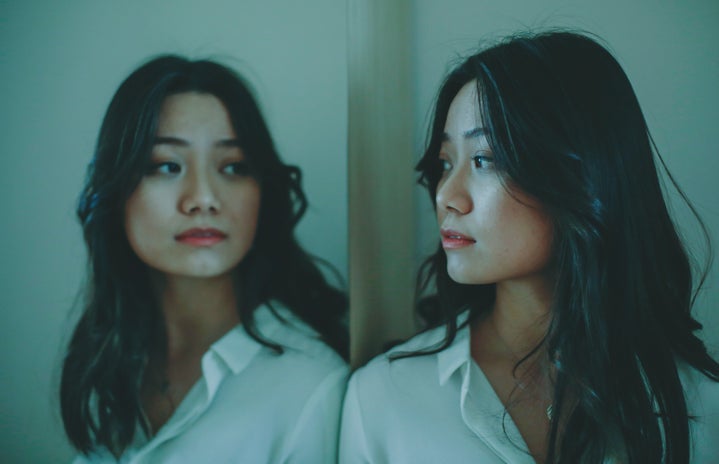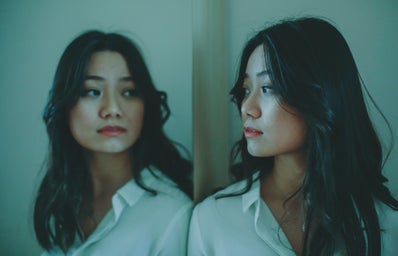I grew up watching a lot of Disney shows, like many people my age. The beautiful beachfront mansion that Miley ‘Stewart’ lived in became a dream house for me. And while I knew my life was so different from everything that I watched – it left a lasting impact on how I’d view my reality to an extent. On the other hand, Indian TV shows often portrayed an opposite picture, a common trope having women as just daughters and wives, jobless, ambition-less. They served as a prop. Even shows where the women had magical powers, there would be a husband exercising control on these ‘powers’. (If you get the reference, congratulations!) While enjoying (or not) these programs, I found myself trying to find myself in them. Only years later did I realize how my 8-year-old self was internalizing a lot of what I saw.
We’ve all grown up watching shows and movies that have stuck with us through the years. No matter which generation you belong to, certain characters never leave your mind – be it how they inspire you or make you laugh, or most importantly how relatable you find them. However, as a common phenomenon, popular culture has given prominence to roles that offer this relatable angle to very few people. Which begs the question — how on-screen representation of a certain section of society affects this content that a very diverse demographic consumes. For the young minds especially, it becomes a matter of them thinking why their lifestyle or appearance is so far removed from the ‘reality’ they’re being fed through TV shows.
While we live during times that are deemed to be more and more progressive, there’s a lot of uncertainty in the air about this so-called representation. Those who have been ignored and sidelined have been fighting to be given the platform to share their stories. And others who are stereotyped very broadly are struggling to portray a genuine image of their culture and identity. Therefore, it is important to take a step back and really examine how these on-screen identities are shaping our understanding of people and also ourselves. When we look at pop culture and how it caters to a very narrow spectrum of people — a myriad of examples come to mind.
The normalized culture, for the most part, influences some evidently parochial perceptions that we must try to break away from. While we do see diversity making its way into pop culture, it is highly performative and presents a narrative that is controlled by Western standards and their definition of ‘representation’. What we need to realize is how gravely distorted this understanding of the term is. Instead of helping people from different cultures amplify their voices, these narratives drown them out or mold it to their liking. Eventually having people of color, of different races, sexualities, of various minority communities ‘represented’ becomes nothing more than a tokenistic publicity stunt.
Hence, what’s needed is more authentic portrayals of the diverse world for the relating factor to actually expand to the world. Movies and shows which depict the West carrying the savior complex burden prove to be problematic in the long run. Often, any piece shot in a ‘developing’ nation or a country with a prominent cultural heritage has unidimensional histories and delineation being served to the world. It affects not just how people and their lifestyles are viewed by everyone else, it damages their own identities and how they see themselves.
When people aspire to be seen, they must how they are seen for people to validate their truths. On-screen portrayals need to realize the importance of letting people represent themselves, rather than indulging in appropriation time and again. The reason many white or cisgender celebrities face backlash when they are given roles that are definitely not who they are in the name of ‘acting’ is because there exist artists from the very communities that production houses wish to represent.
There are a lot of exceptions of shows doing better to bring forth untold and overshadowed stories with the authentic voices that are needed. But this movement needs to accelerate in order to bring about a change. Pop culture holds a highly influential stance in individual lives and society as a whole. “For so many people, television and movies may be the only way they understand people who aren’t like them,” says Michelle Obama. The picture pop culture paints of people doesn’t simply serve the purpose of inclusivity and representation. It feeds into the perceptions of one’s culture by another — which often ends up being biased. This bias has to be done away with to break the barriers that separate cultural identities and promotes more understanding and compelling storytelling which brings us together, rather than dividing us.
Representation, therefore, has a responsibility to be inclusive to have a more positive impact – be it on politics, shaping young minds, or people’s idea of themselves in others’ eyes. Everyone wants to feel seen and understood. With the desire to portray perfection and fantasy-like characters, the touch with reality is often lost. The idea remains to understand others and to be understood and popular culture remains an instrumental medium to provide just that.


